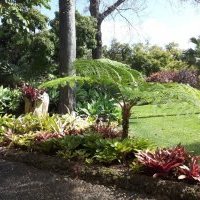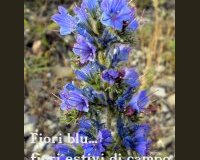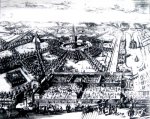accueil site > Paysage et patrimoine > 01. Teaching materials > 02. Primary school > In Enghien Castle’s gardens :historical reading
- 01. Fiches pédagogiques
- 01. Teaching materials
-
02. Jardin sans frontière : une école pour développer les compétences -clés en Europe
- 04. Partenaires
- 05. Rencontres transnationales
- 14. À l’école du jardin. Mobilités de formation dans les jardins d’Europe
- 15. À l’école européenne du jardin. Paroles de formateurs sur leurs formations "entre pairs"
- 16. A l’école auropéenne du jardin. Paroles d’apprenants sur leurs mobilités Erasmus+
- 19. Petit glossaire "européen" du jardin
- 20. Dissémination
- 21. Exploitation locale du projet
- 03. Un nouvel Erasmus+ : Le bleu européen comme étendard contre l’exclusion des adultes
-
09. Erasmus+ partenariato
-
Cammini del Blu in Europa
- 01. Incontri transnazionali
- 05. Progetti blu di partners
- 10. Percorsi europei del Blu
- 20. Storie blu
- 40. Disseminazione
- 43. Transcultural Carpet Blue
- 45. Missive blu
- 46. Glossario blu
- 47. Schede didattiche "Pedagogia del colore blu in Europa"
- 48. Illustrazioni delle schede didattiche : Mostra delle opere degli studenti
-
Giardino senza frontiere. Una scuola per lo slivuppo di competenze chiave in Europa
- 04. Partners
- 05. Riunioni transnazionali
- 14. Alla scuola del giardino. Mobilità di formazione nei giardini d’Europa
- 15. Alla scuola del Giardino. Parole di formatori sul loro addestramento "tra pari"
- 16. Alla scuola del giardino. Parole dei discenti sul loro Erasmus + Mobilità
- 19. Piccolo glossario europeo del giardino
-
Cammini del Blu in Europa
-
11. Erasmus+ Partnership
- 01. Transnational Meetings
- 05. Blue Projects of partners
- 07. European roads of the Blue
- 10. Blue stories
- 40. Dissemination
- 43. Transcultural Carpet Blue
- 45. Blue Missives
- 46. Blue Glossary
- 48. Roads of the blue : the file
- 50. Illustrations of the pedagogic file : exhibition of works of learners
-
51. Garden Without Borders : A School for Developing Key Competences in Europe
- 04. Partners
- 05. Transnational meetings
- 14. At Garden School. Training mobilities in the gardens of Europe
- 15. At Garden School. Words of trainers on their "peer-to-peer" training
- 16. At Garden School. Learners’ words about their mobility Erasmus +
- 19. Small European glossary of the garden
- 20. Dissemination
-
11. Partenariats Erasmus+
-
01. Les chemins du bleu en Europe
- 01. Rencontres transnationales
- 05. Projets bleus des partenaires
- 10. Routes du Bleu en Europe ...
- 20. Histoires Bleues
- 40. Dissémination
- 43. Transcultural Carpet Blue
- 45. Missives bleues
- 46. Glossaire bleu
- 47. Formation pédagogique : fiches pédagogiques et référentiel de compétences clés et transversales
- 50. Illustrations des fiches pédagogiques : exposition des travaux des apprenants
-
01. Les chemins du bleu en Europe
- 12. Pedagogic tools
- 17. Fiches pédagogiques
- 17. Schede Pedagogiche
Paysage et patrimoine
In Enghien Castle’s gardens :historical reading vendredi 28 novembre 2008
To learn how to decypher the signs of the past in a garden, which enables to build one’s historical knowledge.
OBJECTIVES
To appropriate the garden as a meaningful historical phenomenon.
SKILLS
![]() To use tools which may help to understand the situation
To use tools which may help to understand the situation
![]() To characterize historical landmarks in relation to conventional periods.
To characterize historical landmarks in relation to conventional periods.
![]() To represent spaces
To represent spaces
![]() To identify man/space interactions
To identify man/space interactions
![]() To read and exploit a trace of the past
To read and exploit a trace of the past
![]() To react to written, sound, visual… documents by expressing a personal opinion and justifying it consistently.
To react to written, sound, visual… documents by expressing a personal opinion and justifying it consistently.
MATERIALS
Notebooks, pencils, tracing paper, “cardamine ? to be sown
REFERENCES
Enghien Park
Work in partnership with the Environment Initiation Centre, a service set in the park of Enghien Château, in order to implement a two-way partnership between the teacher and the specialized guide. Each partner uses their specific skills to bring into class life the skills and notions tackled by the pupils during the activities.
PROCEDURES
Move about freely in the garden in groups of four. Spot some places, take a picture. Note a few key-words conveying the impressions and a brief description.
The pupils’ reactions : first impressions, questions about the place of man in this garden, about the sensation of opening, closing. Some characteristics of this both medieval- and Renaissance- inspired garden are thus brought out. Some elements linked to the historical context are brought.
Then each group of children is split. Each group transfers both sides of the flowerbeds’ design on tracing paper. The symmetry can be brought out by several observations : the two drawings can be superposed. By folding the maps, several symmetry axes can be noticed.
In class, the teacher collects the traces linked to the impressions felt by the children in the garden.
Then they search for gardens’ photographic documents presenting similar aesthetic features (in a library or internet). The children try to pick out constants : fence, symmetry, central water-occupied point.
Links are established with the historical and social context of the period by the teacher.
The teacher suggests the children should make a cardamine garden : the flowerbeds’ drawing and the garden structure enable the child to integrate the elements observed in history, mathematics, as well as in French.
FOLLOW-ON-ACTIVITIES
To tackle various types of European gardens throughout time ; to make connections with the social context, the conception of the relation between man and nature.
TRANSPOSITION The activity can be carried out by parts. For example, the cardamine garden is particularly adapted to younger children.
Aline Bruier-Desmeth. Hélène Devriendt. Sandrine Grisard. Vannerom Christelle Angélique Charmant Haute Ecole roi Baudouin, Braine-le-Comte, Belgique.


















 Version imprimable
Version imprimable
